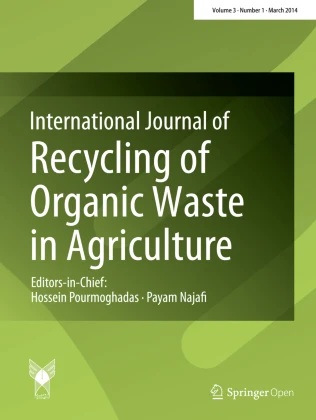Impact of textile sludge on the growth of red amaranth (Amaranthus gangeticus)
- Department of Environmental Sciences, Jahangirnagar University, Dhaka, Bangladesh
- Department of Chemistry, Jahangirnagar University, Dhaka, Bangladesh
- Chemistry Division, Atomic Energy Centre, Bangladesh Atomic Energy Commission, Dhaka, Bangladesh
- Institute of Radiation and Polymer Technology, Bangladesh Atomic Energy Commission, Dhaka, Bangladesh

Received: 2015-08-10
Accepted: 2016-03-28
Published in Issue 2016-04-28

This work is licensed under a Creative Commons Attribution 4.0 International License.
How to Cite
HTML views: 4
PDF views: 0
Abstract
PurposeIn Bangladesh, the sludge of textile effluent treatment plant has been considered as a potential environmental threat due to its huge volume and chemical content. Thus, the present study was carried out to assess the reuse possibility/potentiality of textile sludge in agricultural applications.
MethodTextile sludge was applied at different loading ratios (0–100 % sludge) with soil for the pot cultivation of red amaranth (Amaranthus gangeticus); subsequently, chemical analyses were carried out on the harvested plants.
ResultsThe results showed that the content of plant nutrients nitrogen (N), phosphorus (P), potassium (K) and iron (Fe) in sludge was significant compared to organic manure along with a high content of total organic carbon (TOC). The growth parameters (height, number of leaves, leaf area and root length) of red amaranth were affected by the application of textile sludge. Maximum plant growth was observed in the 100 % sludge treatment group, maybe because of the high content of plant nutrients. However, the root length and number of leaves were not significantly affected by the sludge. The plant analyses implied that addition of textile sludge did not increase the content of copper (Cu), cobalt (Co), cadmium (Cd), nickel (Ni) and manganese (Mn), but lead (Pb), chromium (Cr), zinc (Zn) and iron (Fe) content crossed the maximum permissible limit set by FAO/WHO.
ConclusionTextile sludge can improve the nutrient contents of pot soil and growth of red amaranth, which is revealed by pot experiments. Therefore, it can be used as soil improver if Pb, Cr, Zn and Fe content can be controlled in the textile sludge.
Keywords
- Fertilizer,
- Heavy metals,
- Nutrients,
- Plant growth,
- Red amaranth,
- Solidification,
- Textile sludge

 10.1007/s40093-016-0126-6
10.1007/s40093-016-0126-6











